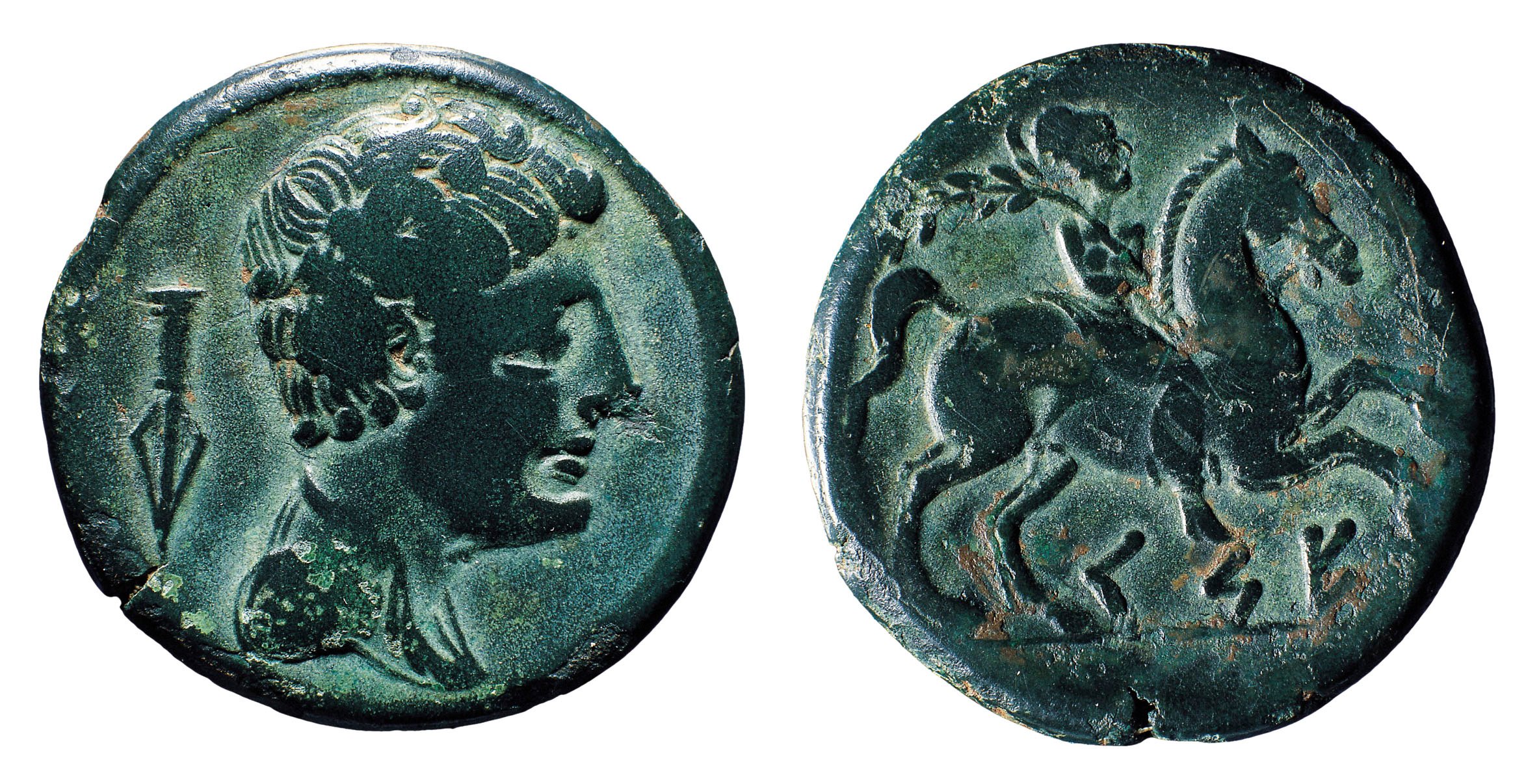Unit of Kese
Throughout the second century BC various Iberian populations began to produce silver and bronze coins. On the obverse of these units was engraved a male head which was sometimes accompanied by a symbol or letter which served to differentiate the mint's issues. The reverses showed a horse and rider and the name of the issuing city or tribe. This particular specimen bears the Iberian inscription KESE, a town which quite probably corresponds to the Iberian Tarragona. The mint at 'Kese' produced a large volume of coins, in line with the importance of the city housing it and the extensive territory of the tribe of the Cessetani, whom it had to supply with currency.
Segona meitat del segle II BC
Former Collections of the Numismatic Cabinet of Catalonia
109113-N


















